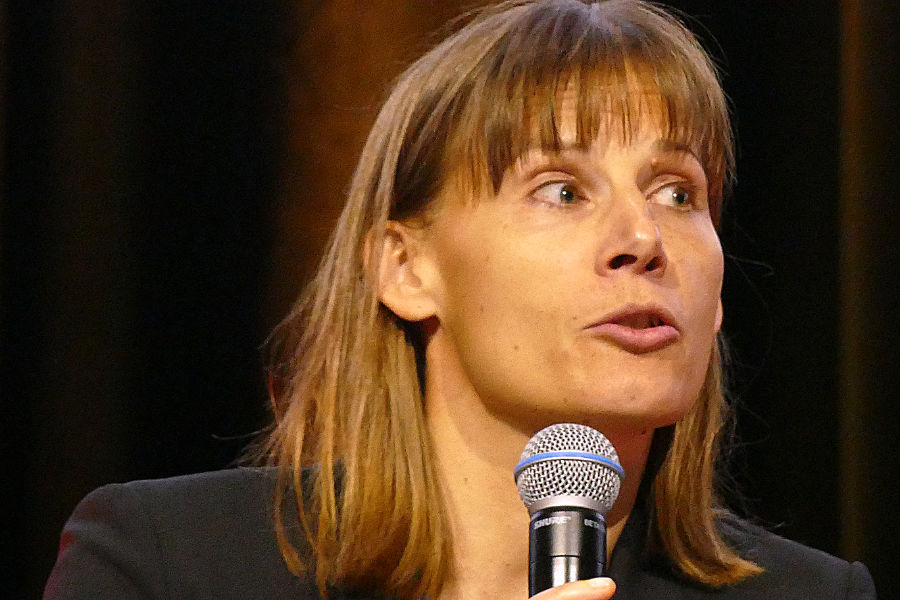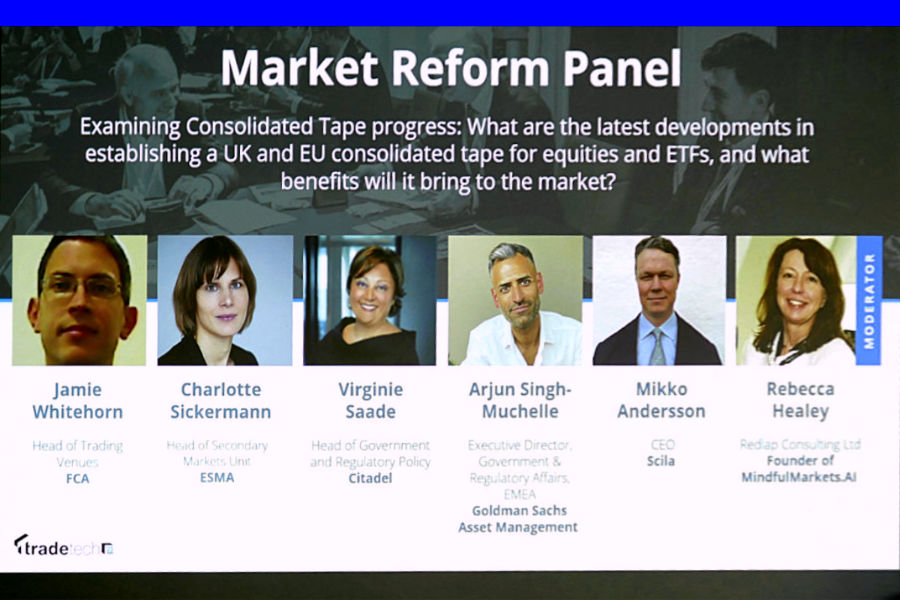 Warming relations between the UK and EU are making an eventual shared consolidated tape more likely, according to regulators – and to the relief of market participants.
Warming relations between the UK and EU are making an eventual shared consolidated tape more likely, according to regulators – and to the relief of market participants.

Virginie Saade, head of government and regulatory policy at Citadel, was clear in her desire for a shared UK-EU tape. “I wish we could have a super CT. We have all these instruments in common between the EU and UK, and when traders ask 10 different brokers about their prices they get 10 different answers. That’s just not acceptable – there is only one answer, one best price.”
A shared tape would ease this process, she observed.

Charlotte Sickermann, head of the secondary markets unit at ESMA, was clear that the tender process is different across the jurisdictions, but suggested that there could be space for a shared tape in the future. “Of course, it would be great to have one tape that covers everything. It is possible that someone makes a business case for a ‘super tape’ once the UK and EU tapes are in place, but we need to be realistic. The UK is no longer part of the EU. Although our rules are largely aligned, we have different processes, different needs. It is unavoidable that some parts will deviate.”

Although Jamie Whitehorn, head of trading venues at the FCA, agreed that the two tapes were distinct entities, he noted that the two authorities were holding regular conversations on technical alignment between the regions. Similarly to conversations held at FIX EMEA earlier this year, regulators emphasised their collaborations but suggested that their hands were tied when it came to fully aligning processes.
READ MORE: Exasperation with UK-EU split breaks out at FIX EMEA conference
Following extensive consultation processes for the tape, though, market participants are less concerned about regional inconsistencies than they once were.
Although an official shared tape would be ideal, Saade commented: “I’m not that worried about the fact that the UK and the EU are going to diverge because the feedback we gave [to both regulators] was exactly the same. In the end, the consolidated tapes are going to look very much alike. So that’s why it’s not so crazy to think that we might have a single provider.”
A competitive edge
Conversation at TradeTech was dominated by discussions of how Europe can capitalise on wobbling US confidence to bring investors to the region. The tape plays a significant role here, panellists argued.
“The tape will allow us to show off to the world. Until we have that, it will be very difficult to compete with the US,” Saade warned.

Arjun Singh-Muchelle, executive director for EMEA government and regulatory affairs at Goldman Sachs Asset Management, concurred. “When we talk to US investors, they want to invest in European or UK names, but they simply don’t have visibility into the total available liquidity. A tape allows for a higher weighting for them to hold local non European and non UK investors to hold European and UK assets.”
From a retail perspective, Saade agreed. “The equity market is such a fast market, and we want to be able to attract a wider variety of investors. The data is not easily available to retail investors, particularly in the UK.”

Both Singh-Muchelle and Mikko Andersson, CEO at Scila, advocated for order books to have at least five layers of depth to give market participants a better idea of the liquidity available in a given security, while Andersson called for more Level 2 data to be included.
Pre, post or both?
Whitehorn emphasised the value of having both a pre- and post-trade equities tape.
“The bond tape is very clearly post trade. We heard a lot that an equity post trade tape will have significant public value, partly because of the evolution of market structure. It’s an important complete picture of liquidity in UK markets, which is important not just for investors, but for the companies who are potentially looking to the UK.”
Compared to the bond CT, which is set to launch in early 2026, Whitehorn stated: “I think it’s fair to say that I think some of the design choices have been a little bit more complicated on the equity side.”
“There’s a strong feeling among many that a lot of the primary value lies in on the pre-trade side, and that pre-trade data is possibly underused in certain functions within firms for reasons of cost and complexity. Others think that a pre-trade tape could have a negative impact on market structure and increase cost.”
“We have a strong feeling that omitting pre-trade may be a missed opportunity.”
‘The issue will be cost,’ affirmed Saade. “The latency infrastructure and the data quality are going to be key determinants of that, but also the ramp up in demand for the tape. There needs to be a balance between ensuring latency for a pre-trade tape, because latency will lead to increased demand from the buy side, and maintaining low costs. Getting that balance right will help democratise access to the tape.”
Not a silver bullet
Speakers agreed that the tape will not act as a replacement to direct exchange data feeds.
Singh-Muchelle asserted: “As far as GSAM is concerned, we do not see the CT as a substitute for buying directly. We don’t buy the arguments that there will be an impact on exchange data revenues. We’ll continue to buy those, mostly for low-latency trading applications.”
He suggested that for the tape to be effective, the base case for latency should be 100 milliseconds.
“That sounds fast until you compare that to US securities information processors, some of which are at 0.09 milliseconds,” he continued. “And despite that, there is retail access and media access to the NYSE SIP. There’s a lot of transparency around cost, and we hope those elements are brought into the EU and UK context to help democratise the market ”
While discussions around an equity CT for the UK and Europe have been ongoing for more than a decade – a timeline not missed by panel participants – progress is certainly being made as the industry hurtles towards a 2026 implementation. As regulators soften their rejection of a shared tape, and market participants begin to see further alignment between the two, the potential of a shared tape may be the next big shift in the CT story.

 Warming relations between the UK and EU are making an eventual shared consolidated tape more likely, according to regulators – and to the relief of market participants.
Warming relations between the UK and EU are making an eventual shared consolidated tape more likely, according to regulators – and to the relief of market participants.